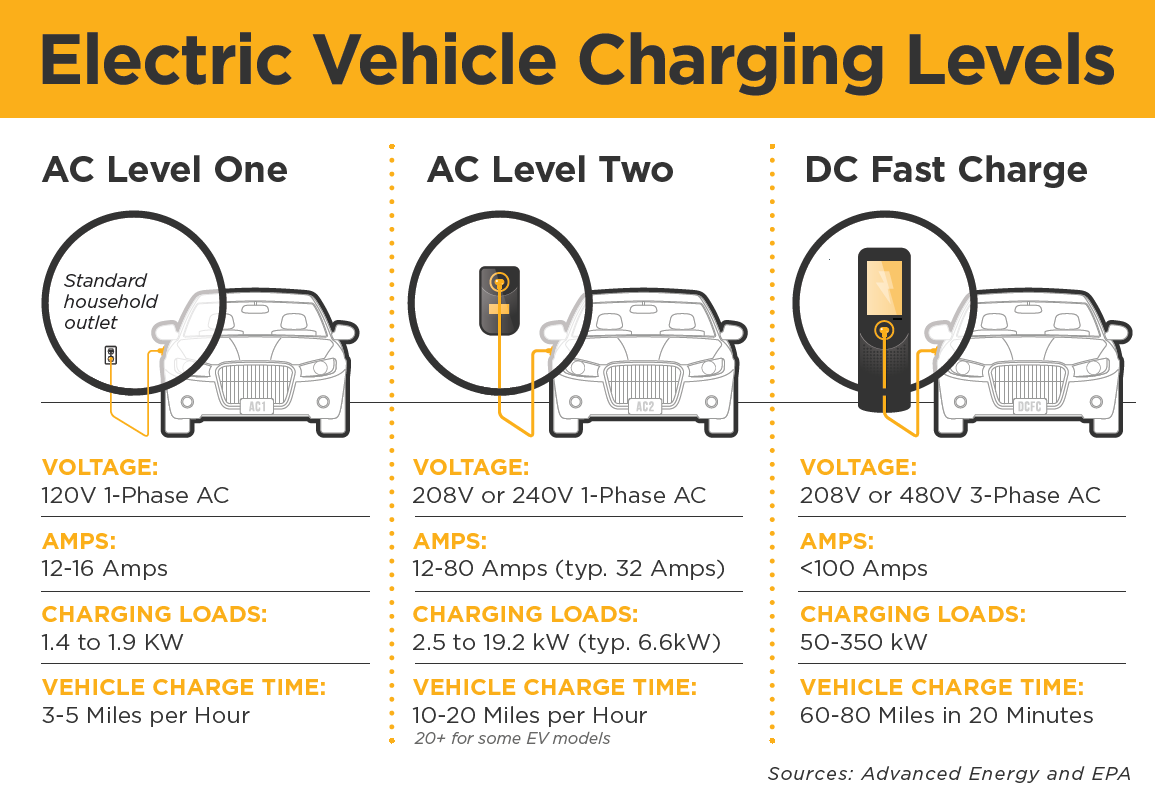You’ve likely heard or read that most automakers are transitioning many or all their new vehicles to electric-only models over the next 10 years. Regardless of the type of car you drive today, the electrification of the transportation sector is underway. Electric vehicle (EV) owners have multiple options for charging their vehicle at home. There are three common EV charging levels:
Level One is the most basic charging level. If you choose this option, your EV will typically include an adapter that plugs into a typical 120-volt outlet. This is the easiest and cheapest charging solution, but it will take much longer to charge your EV.
Level Two is about 3-5 times faster than Level One, but this level of charging often requires separate purchases and installation. The EV is plugged into a 240-volt outlet, which is used for larger appliances, like a clothes dryer. Most homes do not include a 240-volt outlet in garages, so the outlet must be installed by a licensed professional. You typically see Level Two charging stations at shopping malls, office buildings and other community spaces.
DC Fast Charge stations are typically seen near high-traffic public areas, rather than in homes. This is the fastest charging level, with the ability to charge an EV to 80% in under 30 minutes.
EV charging creates additional energy demand and can affect your monthly energy costs. By letting us know about your EV charger, we can help ensure your home is prepared for the additional energy consumption, and you can learn more about our $350 Level Two EV charger rebate.

